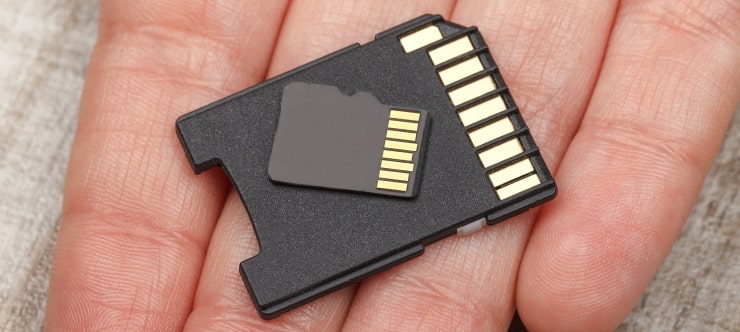What is DDoS and How to Handle It

I think there's an issue with my storage device, but I'm not sure
Start a free evaluationA Distributed Denial of Service (DDoS) attack is a malicious attempt to disrupt the normal functioning of a targeted server, service, or network by overwhelming it with a flood of internet traffic from multiple sources. A DDoS attack involves multiple sources, often thousands or even millions of compromised devices coordinated by a central command. The distributed nature of DDoS attacks makes them more powerful and challenging to mitigate than DoS attacks. DoS attacks initiate from a single source, such as one computer or internet connection. Meanwhile, DDoS attacks can utilize botnets, which are networks of hijacked devices, to amplify the volume of traffic directed at the target.Before preceding, here are a few terms to understand DDoS better:
- TCP Ack: transmission control protocol acknowledgment
- TCP Syn: transmission control protocol synchronized
- DNS Amp: domain name system amplification
- Botnet: a network of compromised computers that have been infected with malicious software and can be exploited to initiate DDoS attacks
How DDoS can impact business:
- Loss of revenue: Downtime resulting from a DDoS attack can disrupt online services, e-commerce platforms, and other revenue-generating activities, leading to significant financial losses.
- Damage to reputation: Extended periods of unavailability can erode customer trust and confidence, damaging the reputation of the targeted organization.
- Operational disruption: DDoS attacks can disrupt critical business operations, communication channels, and service delivery, leading to delays, inefficiencies, and increased operational costs.
Types of DDoS attacks
It is possible to categorize DDoS attacks into two types: infrastructure layer attacks, which target network resources, and application layer attacks, which exploit vulnerabilities in software or web applications. Understanding the different types of DDoS attacks is crucial for implementing effective mitigation strategies and protecting against potential threats.
Infrastructure layer attacks
Infrastructure layer attacks target the underlying network infrastructure or transport layers, aiming to overwhelm network resources, such as routers, switches, or bandwidth capacity. These attacks typically involve flooding the target with a high volume of traffic, causing network congestion and service disruption.
Examples of infrastructure layer DDoS attack
- SYN Flood: In a SYN flood attack, the attacker floods the target server with a large number of TCP connection requests (SYN packets), exhausting the server's resources and preventing it from responding to legitimate requests.
- UDP Flood: UDP flood attacks involve sending a large volume of User Datagram Protocol (UDP) packets to the target, consuming network bandwidth and overwhelming network devices.
- Amplification attacks: In these attacks, the attacker exploits vulnerable network protocols, such as DNS, NTP, or SNMP, to amplify the volume of traffic directed at the target. By sending small requests with spoofed source IP addresses to amplification servers, the attacker can generate significantly larger responses, magnifying the impact of the attack.
Application layer attacks
Application layer attacks target specific vulnerabilities in the software or application layer of the target system. Unlike infrastructure layer attacks, which focus on network resources, application layer attacks aim to disrupt the functionality of web applications, APIs, or services by exploiting weaknesses in the application logic or resource utilization.
Examples of application layer DDoS attack
HTTP Flood: HTTP flood attacks involve sending a high volume of HTTP requests to a web server or application, consuming server resources such as CPU, memory, or bandwidth. These attacks can overwhelm the server's capacity to process legitimate requests, leading to service degradation or downtime.SQL Injection: SQL injection attacks exploit vulnerabilities in web applications that use SQL databases, allowing attackers to manipulate SQL queries and gain unauthorized access to sensitive data or execute malicious commands.Layer 7 DDoS: Layer 7 DDoS attacks target specific application-layer protocols or functionalities, such as authentication mechanisms, login pages, or search functionalities, to exhaust server resources or disrupt user access.
How to handle DDoS attacks
Sometimes, even when a business has preventive measures in place, threat actors succeed. In these moments, you must handle and respond to the DDoS attack to prevent further damage and ensure it does not leave an open door for new cyber attacks.
1. Contact cybersecurity service
This is the first step during a cyber attack. A cybersecurity service provider, like SalvageData or Proven Data, has the expertise in incident response and resources to handle DDoS attacks effectively. As cyber security providers, we will analyze the attack type and scale and help implement mitigation strategies.Our security experts will also provide additional security measures to prevent future attacks. And, if any file got corrupted or lost during the attack, we can securely restore the data to its original state.
2. Apply your incident response plan
Having a pre-defined incident response plan is crucial for a swift and coordinated response to incidents like natural disasters or cyber-attacks. The plan specifies the roles and responsibilities of different teams (IT, Security, and Communications) and establishes communication protocols for internal and external stakeholders.It also gives the steps for identifying, containing, and recovering from the attack.By following the pre-defined steps, you can minimize downtime and ensure everyone involved knows their responsibilities.
3. Employ traffic filtering and web application firewalls (WAF)
Traffic filtering and WAFs can help mitigate DDoS attacks by identifying and blocking malicious traffic.The traffic filtering analyzes incoming traffic based on pre-defined rules. It can block traffic from known malicious IP addresses or based on suspicious traffic patterns (e.g., sudden spikes in traffic volume).While web application firewalls (WAF) focus on application layer (Layer 7) attacks. It can identify and block malicious HTTP requests that target vulnerabilities in your web applications.Pro tip: Ensure your filtering and WAF solutions can handle large traffic volumes during an attack.
How to prevent a DDoS attack
Preventive measures are the most effective strategy to prevent cyber attacks, including DDoS, and ensure business continuity.
Implement DDoS protection services
Enroll in dedicated DDoS protection services provided by ISPs (Internet Service Providers) or specialized cybersecurity firms. These services can detect and mitigate DDoS attacks before they reach your network.
Network hardening
Strengthen your network infrastructure by implementing security best practices such as firewall configurations, intrusion detection systems (IDS), and regularly updating security patches to mitigate known vulnerabilities.
Anomaly detection
Deploy network monitoring tools capable of detecting abnormal traffic patterns that may indicate a DDoS attack in progress. Prompt detection allows for timely mitigation efforts.
IP filtering
Utilize IP filtering to block traffic originating from suspicious or known malicious IP addresses. This can help prevent DDoS attacks launched from botnets or compromised devices.
Web application firewalls (WAF)
Deploy WAFs to filter and block malicious traffic targeting web applications. WAFs can detect and mitigate application-layer DDoS attacks by analyzing HTTP requests and responses.
Related services
These are the most commonly requested data recovery services. At our headquarters' cleanroom lab, our certified engineers conduct a thorough review of any type of physical storage device, determining if there is logical or physical damage and carefully restoring all of the lost files.ces.

External Drive Data Recovery
We recover data from both external SSD and HDD drives. Rely on certified experts to restore your important files from damaged or corrupted external drives.

Hard Drive Data Recovery
Recover data from all brands of HDD, PC hard drives, and hybrid disks. Our specialists ensure fast and secure recovery for any data loss scenario.

NAS Data Recovery
Recover data from NAS devices, including RAID configurations. Our team handles all types of NAS systems and ensures data recovery with minimal downtime.

RAID Data Recovery
Our RAID data recovery services cover RAID 0, 1, 5, 10, and other configurations. We offer expert solutions for failed, degraded, or corrupted RAID arrays.

SAN Data Recovery
Our team specializes in handling SAN devices from leading manufacturers like Dell EMC, HP, and IBM, ensuring efficient recovery with minimal disruption to your operations.

SD Card Data Recovery
Our recovery experts specialize in restoring data from SD and memory cards. We guarantee quick recovery with a no-data, no-charge policy.

SSD Data Recovery
Our data recovery experts handle all SSD data loss scenarios with advanced tools, ensuring maximum recovery with high-security protocols.

USB Flash Drive Data Recovery
Recover lost data from USB flash drives, regardless of the damage or brand. We offer free in-lab evaluations to assess data recovery needs.
If you’re unsure about which data recovery service to choose, let our team assist you in selecting the appropriate solutions. We understand the anxiety that comes with a sudden drive failure, and we are more prompt in our actions compared to other recovery service providers.



